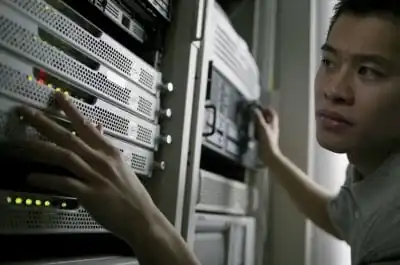Understanding the Relationship of Cooling Capacity, IT Load and Airflow Management10 min read

This post originally appeared on Data Center Journal, titled Connecting the Dots Between Cooling Capacity, IT Load and Airflow Management. You can view the original article here.
Introduction
Everyone is trying to improve airflow management (AFM) because cooling infrastructure is one of the biggest expenses in a data center. Lowering the cost of cooling through improved AFM is a practical, simple way to reduce operating expenses. Recovering stranded capacity can also enable operators to increase computer-room density. AFM is more than just wasted CFM (cubic feet per minute) that could be used to cool IT equipment. AFM has a cascading effect on efficiency, capacity, opex, and capex.
Currently, data centers are losing important cooling capacity, as it is calculated that 48% of holes in the raised floor leak valuable conditioned air. These openings are made up of unmanaged or unsealed cable openings, openings under electrical equipment, and misplaced perforated tiles. These holes consequently leak conditioned air that is crucial for cooling IT equipment in the facility. To combat this, sites often add more cooling units. In fact, Upsite research has determined that on average, sites have cooling capacity that’s 3.9x the IT load. The basic question all data center operators and managers must be asked is, How well do you understand the relationship between cooling capacity, IT load, operating costs, thermal management and airflow management?
You can’t improve what you don’t measure. When it comes to data center cooling, Upsite recommends starting by calculating the cooling capacity factor (CCF). Once the opportunity for improvement is determined and a target CCF is set, the next step is to implement AFM improvements using what Upsite refers to as the 4Rs: the raised floor, rack, row, and room of a site. Repeating a cycle of calculating the CCF and using the 4Rs and recalculating the CCF, a site can move toward greater capacity through improved airflow management in the most cost-effective way.
The Cooling Capacity Factor (CCF) Identifies Utilization of Existing Capacity
The CCF divides the total rated cooling capacity by the IT load. This number is a percentage of the potential capacity that is actually used for efficient cooling. To calculate the CCF, simply divide the total running rated cooling capacity (kW) by 110% of the IT critical load (kW). 110% of IT load is used to estimate the additional room load that would include lights, people and building envelope not reflected in the UPS output.
The resulting number indicates whether the cause of cooling issues is primarily a lack of capacity or just problematic AFM. For rooms with problems, such as hot spots, the CCF determines if the cause is due to a lack of capacity, or AFM. For rooms with no problems, the CCF determines if the current environment can be managed at a lower cost. In both cases, stranded capacity is freed.
A typical CCF will often range between 1.2 and 3.0. A result between 1.5 and 3.0 is most common. These rooms have substantial opportunity to reduce operating costs, improve the IT environment and increase the IT load that can be effectively cooled. Rooms in this range often have significant stranded cooling capacity that can be freed by improving AFM.
Rooms with a CCF greater than 3.0 have great potential for improvement since the total rated cooling capacity of running units is at least three times 110% of the IT load.
Although these numbers are the result of a simple calculation, they nonetheless quickly show the opportunity for improving the efficiency of the cooling systems, which can usually be implemented through inexpensive solutions.
Remediation—Improving CCF
Calculating the CCF for a computer room reveals excess cooling capacity and opportunity for improvement. Upsite recommends following a practical, impactful and cost-effective sequence of AFM initiatives that starts with the raised floor, then moves to the rack then row. After implementing AFM improvements, changes at the room level need to be made. The CCF should then be recalculated to check progress toward the desired CCF. As more improvements are required, this cycle needs to be repeated. The important point here is to use the 4Rs in their proper sequence.
Again, the 4Rs are:
- Raised floor
- Racks
- Rows
- Room
Sealing these four components of a facility in the proper order shown above will produce the best results. The concept of the 4Rs should be used to make improvements, monitor the results and then repeat as needed. The sequence of the 4Rs is important, as going out of order will likely produce suboptimal results. For example, Upsite has witnessed sites that implemented full containment (the third R) only to have its potential benefits severely compromised by a lack of AFM fundamentals and prerequisites, including missing blanking panels (second R) and raised floor grommets (first R).
Once a site has determined its CCF calculations, no matter where it falls on the scale of minor to drastic improvements, each facility can begin with the basic, and (luckily) often inexpensive, solutions linked to the 4Rs. Sealing the basics and building a proper foundation is the first step to reducing cooling costs later on.
Once a site has progressed through the first 3Rs, from sealing raised floors to improving AFM efficiency of the racks and row, it will be in a position to make changes in its cooling infrastructure, from the number of cooling units running to fan speeds, temperature and relative-humidity set points. Changes to cooling-unit function and controls are necessary to take full advantage of the now improved AFM. The benefits of this integrated approach are the following:
- Increased perforated tile flow rates
- Elimination of hot and cold spots
- Increased cooling-unit capacity
- Reduced UPS load
- Increased cabinet and raised floor maximum density
- Reduced operating cost
- Deferred capital expenditure
Conclusion
Ultimately, making adjustments to computer-room cooling units are where savings are realized, but the first step is to find a baseline of how a site is doing and how AFM basics can be improved. Eliminating inefficiencies with first-level solutions can ensure optimal performance from later, more-expensive solutions. This cycle, calculating the CCF and then addressing the 4Rs, should be repeated systematically to address changes and ensure ongoing results. Data centers are dynamic and must remain flexible to business needs; this is why maximizing the utilization of the cooling infrastructure is so important.

Airflow Management Awareness Month
Free Informative webinars every Tuesday in June.
0 Comments